Why measure gloss?
Gloss is an aspect of the visual perception of objects that is as important as colour when considering the psychological impact of products on a
Multiple aspects of surface appearance contribute to how the quality of a surface is perceived. Consumers subconsciously observe the glossiness, colour, translucency and texture of surfaces when judging the aesthetic appeal of a product.
Product aesthetics is a major factor in driving consumer purchase. Designers and manufacturers invest significant resources in optimizing materials and processes for maximum consumer appeal.
Aesthetix® uses cutting-edge measurement technology* to quantify overall surface appearance with the closest correlation to human perception.
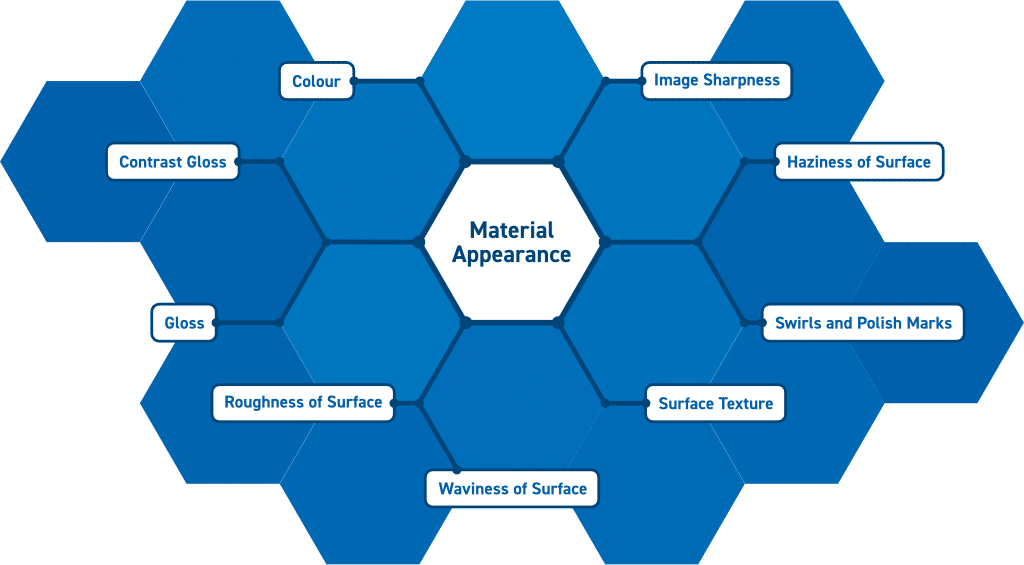
*Measurement technology co-developed with industrial and academic partners.
Aesthetix® is an advanced system that predicts the impact of surface quality on consumer perception using new measurement metrics.
This modular device measures all aspects of surface quality, including glossiness, texture, topography, surface patterns, and visual homogeneity. Adaptable to various workflows, it can measure flat, curved, and small areas with contact or non-contact methods. Aesthetix® can distill complex measurement into easy to understand perception parameters which can be used to set pass/fail tolerances. Enhanced with Rhopoint Appearance Elements software, it supports data sharing, storage, analysis and reporting, making it a comprehensive tool for surface quality assessment.
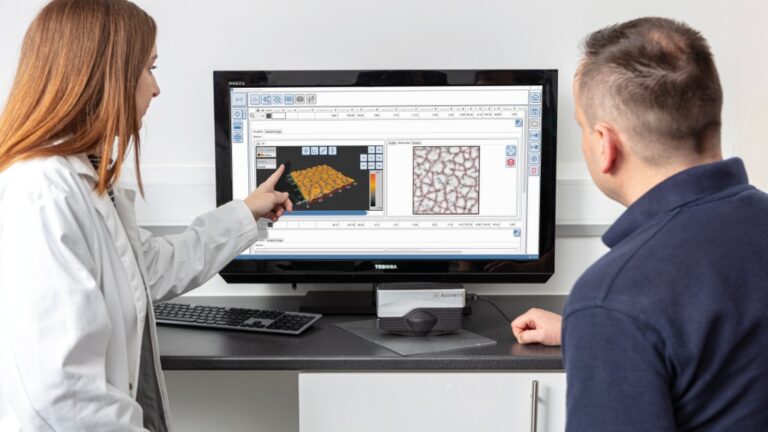
Use Aesthetix® perception metrics to understand what makes a perfect surface finish in the eyes of the consumer. Set new standards with defined pass/fail criteria.
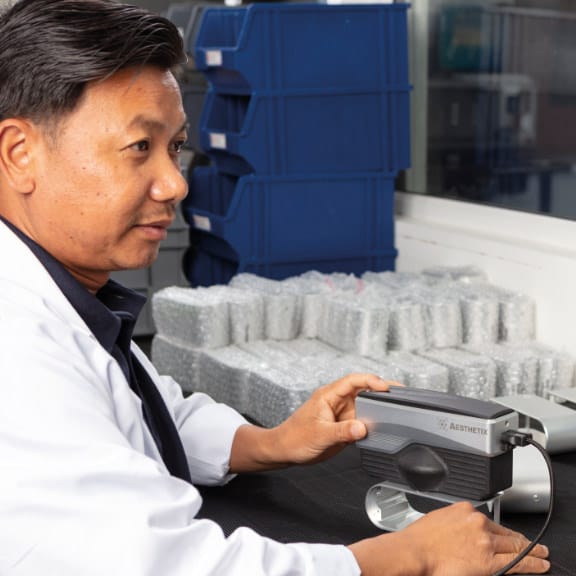
A simple QA interface with job based work flow can be employed for routine surface inspection.
Designed for automation, the noncontact Aesthetix® sensor can be integrated into a cobot or robot measurement cell.
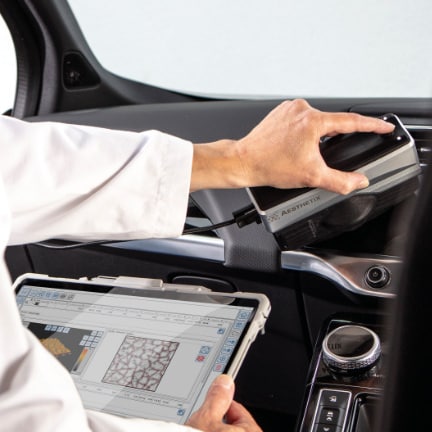
Connected to a tablet, the Aesthetix® can be used as a portable off-site measurement tool.
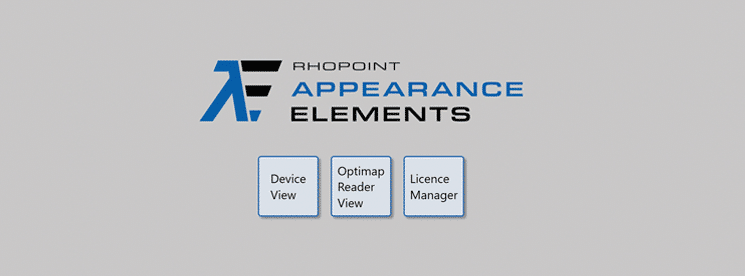
Rhopoint Appearance Elements software is used to analyse measured results by comparing values, images and topographical information against reference standards.
Rhopoint Appearance Elements provides a structured, fully indexed database for precise process optimisation and future AI-driven decision-making.
A local database stores results, data and images from a single instrument. Data and images can be output for further analysis.
A network database for multiple instruments and locations.
Host your database on the Rhopoint cloud or use your organisation’s cloud.
Dual camera system:
Designed to capture detailed information about the surface and how it interacts with light.
Observer camera:
Captures a highly detailed colour-correct image of the surface.
Gloss camera:
HDR images are used to characterise multiple aspects of surface glossiness.
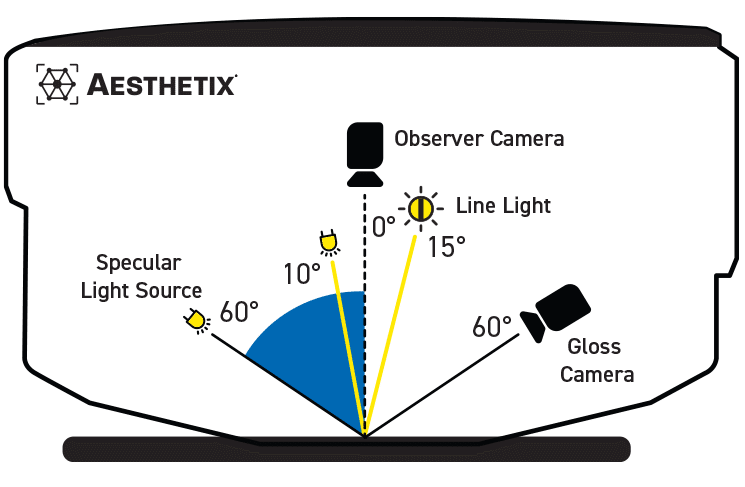
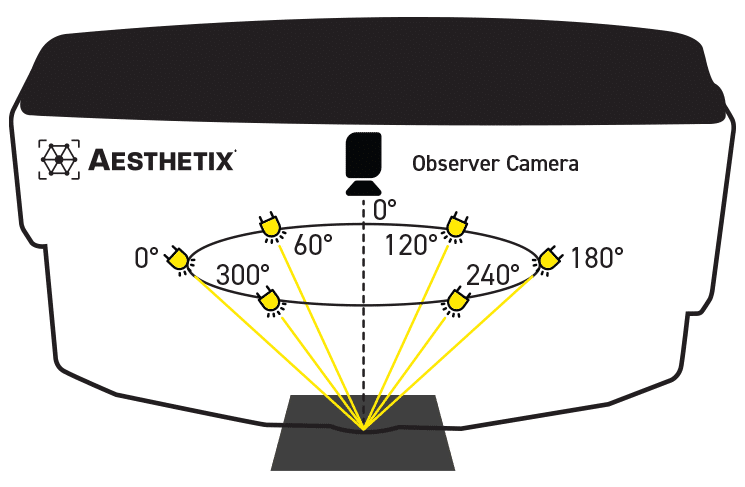
Specular light source:
Conforming to ISO 2813 and ASTM D523, this is used in the calculations for gloss, visual gloss, DOI, sharpness, haze, visual haze.
6 x 45° ring lights:
Used to light the surface for image capture, sparkle analysis and photometric stereo.
Line light:
Used to measure orange peel and surface waviness.
10° spot light:
Used in the analysis of scratches, holograms and haze.
The Aesthetix® instrument vision system comprises of a sensor unit connected via USB 3.0 supporting onsite inspection with a tablet, surface analysis with a laboratory PC and in-line quality control via SPC.
This modular device measures all aspects of surface quality, including glossiness, texture, topography, surface patterns, and visual homogeneity. Adaptable to various workflows, it can measure flat, curved, and small areas with contact or non-contact methods.
Interchangeable measurement adaptors allow for measurement of flat surfaces, small parts, small areas and curved surfaces.
The instrument is able to accept custom jigs and adaptors for more repeatable measurement of small and complex parts.
For non-contact measurement of delicate surfaces, liquid coatings, gels, creams and pastes, Aesthetix® can be used with a height-adjustable stand.
High-throughput sample analysis can be achieved with Aesthetix® integrated into a laboratory cobot system.
The Aesthetix® can be integrated into a production environment as a non-contact in-line sensor.
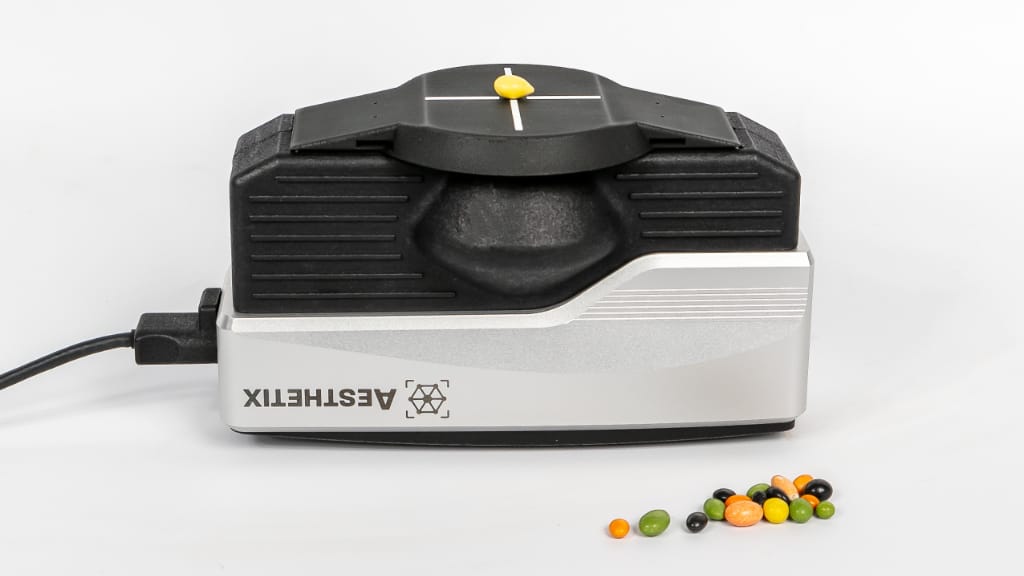
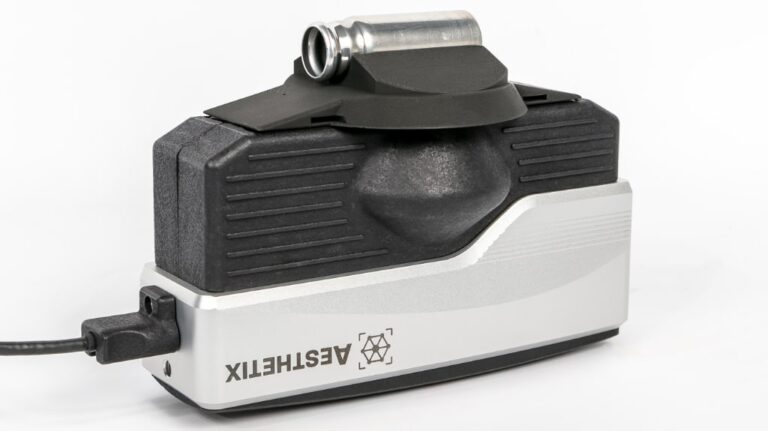
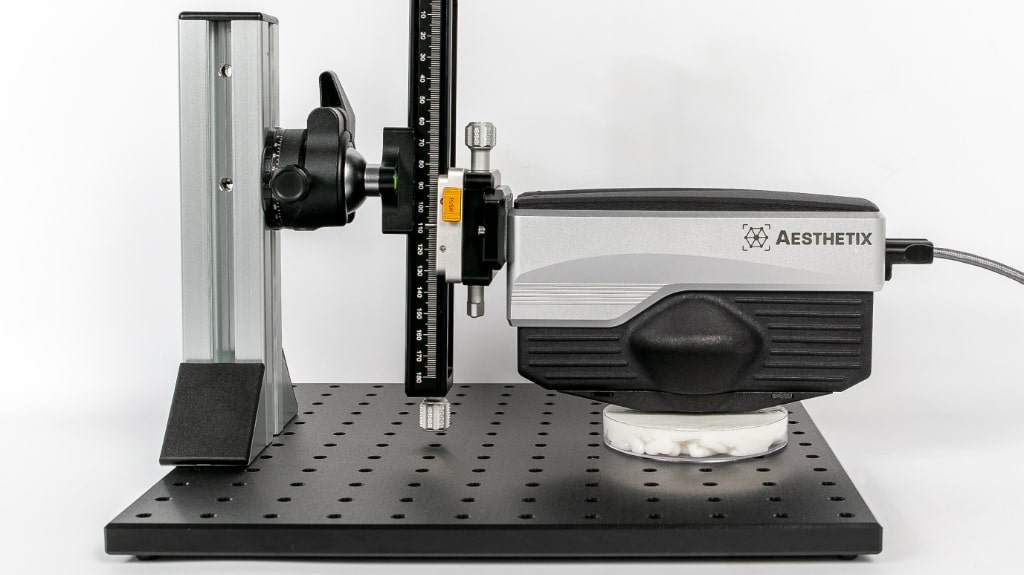
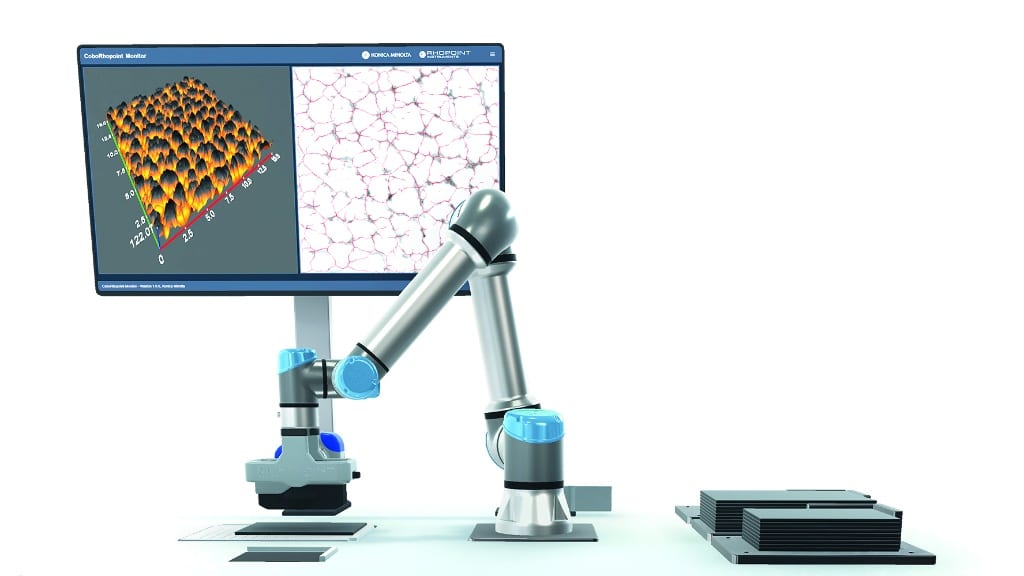
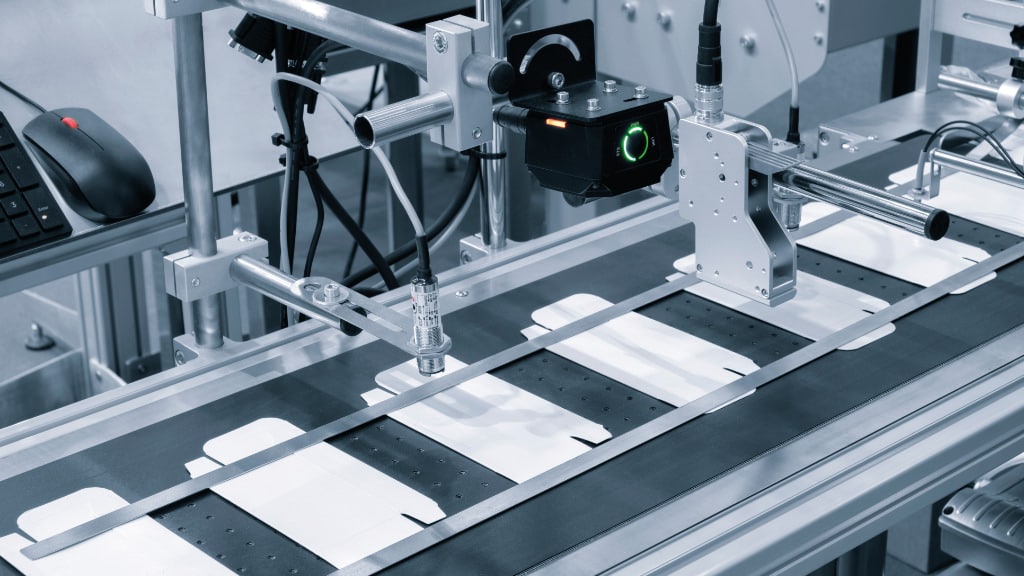
Rhopoint Appearance Elements software is at the heart of the Aesthetix® instrument vision system, capturing images for analysis with cutting-edge algorithms. Measurement images, graphs, and topographical surface maps illustrate the appearance qualities of the surface. Numeric results and images are stored in a local, network or cloud database, ensuring secure, scalable data management.
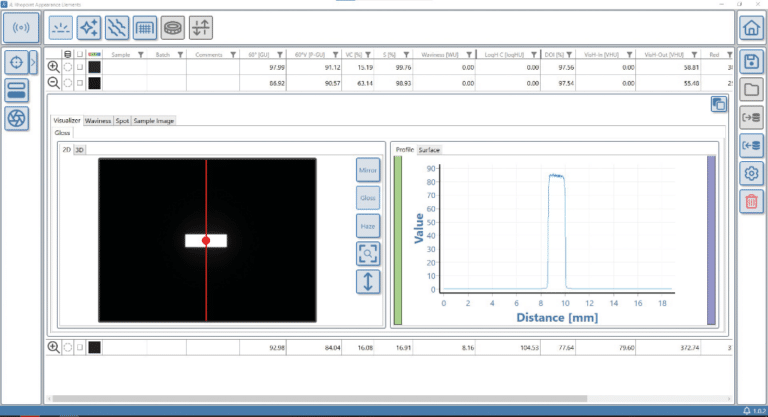
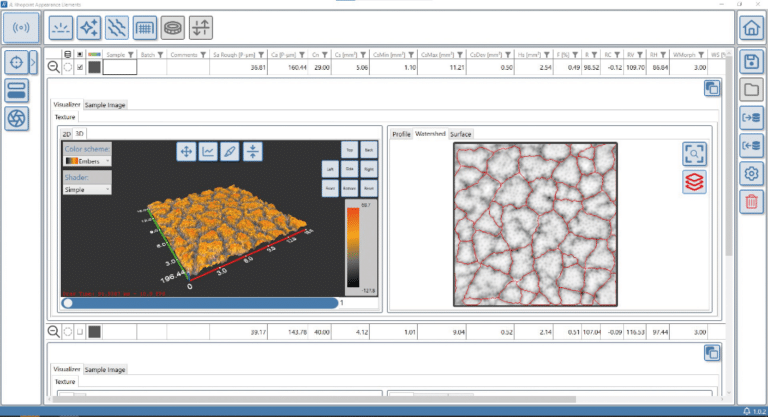
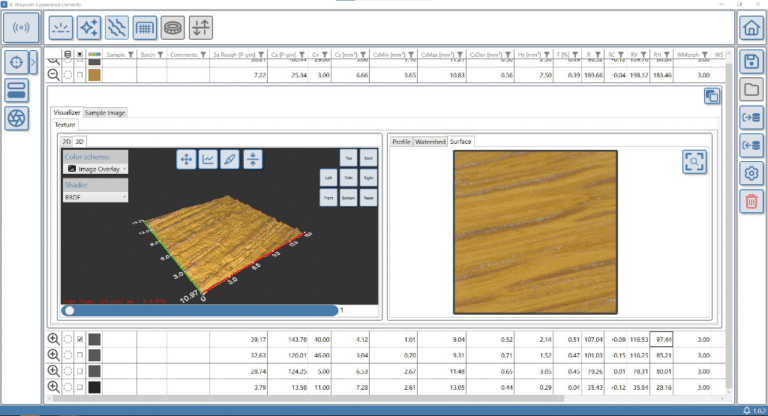
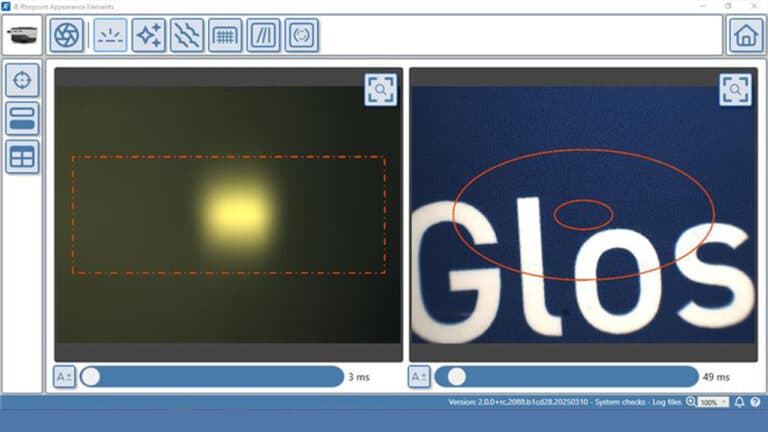
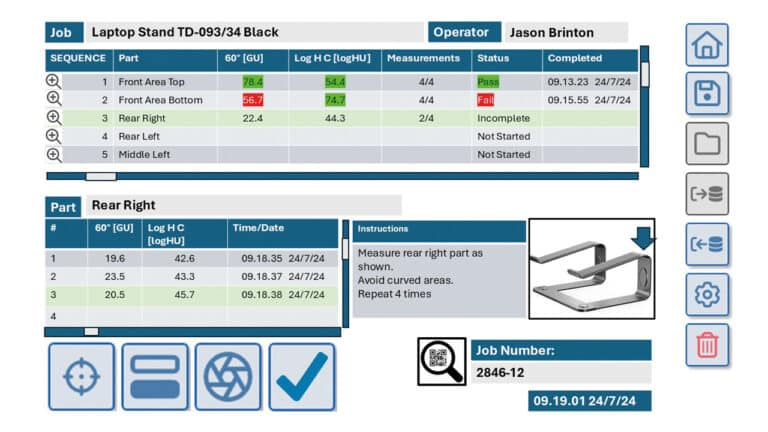
A combination of perception metrics that comprehensively describe the reflectivity and visual quality of high-quality, high-gloss surfaces.
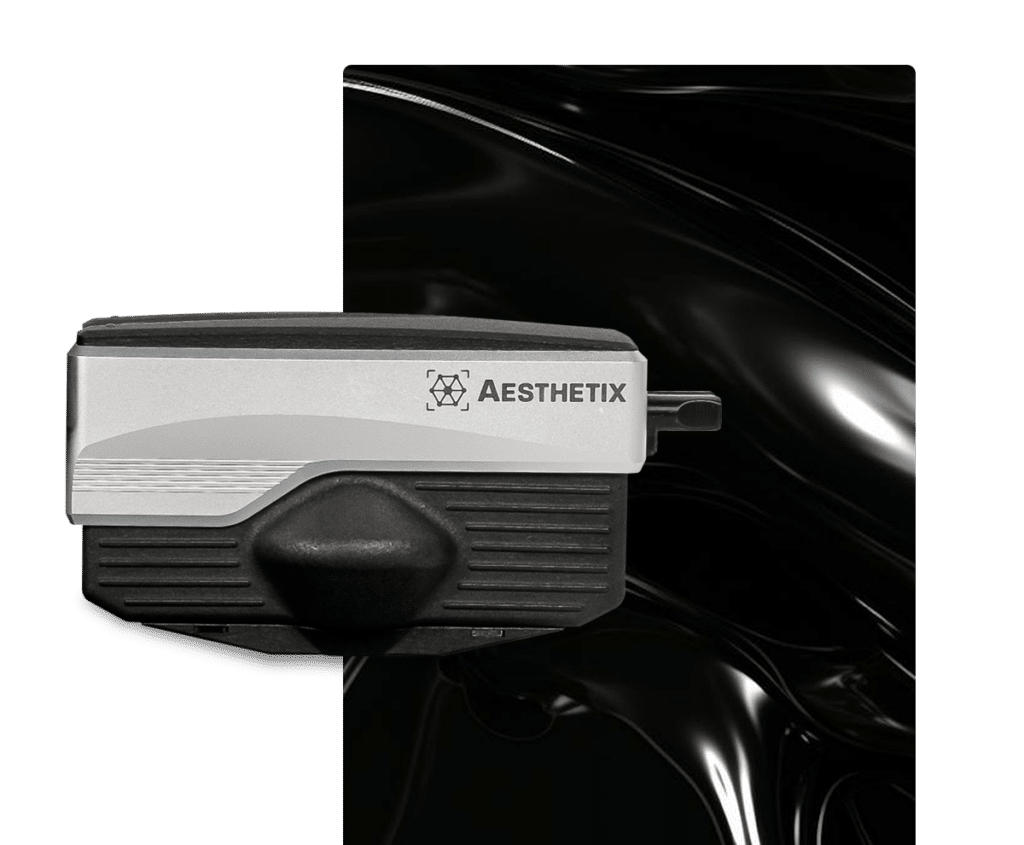
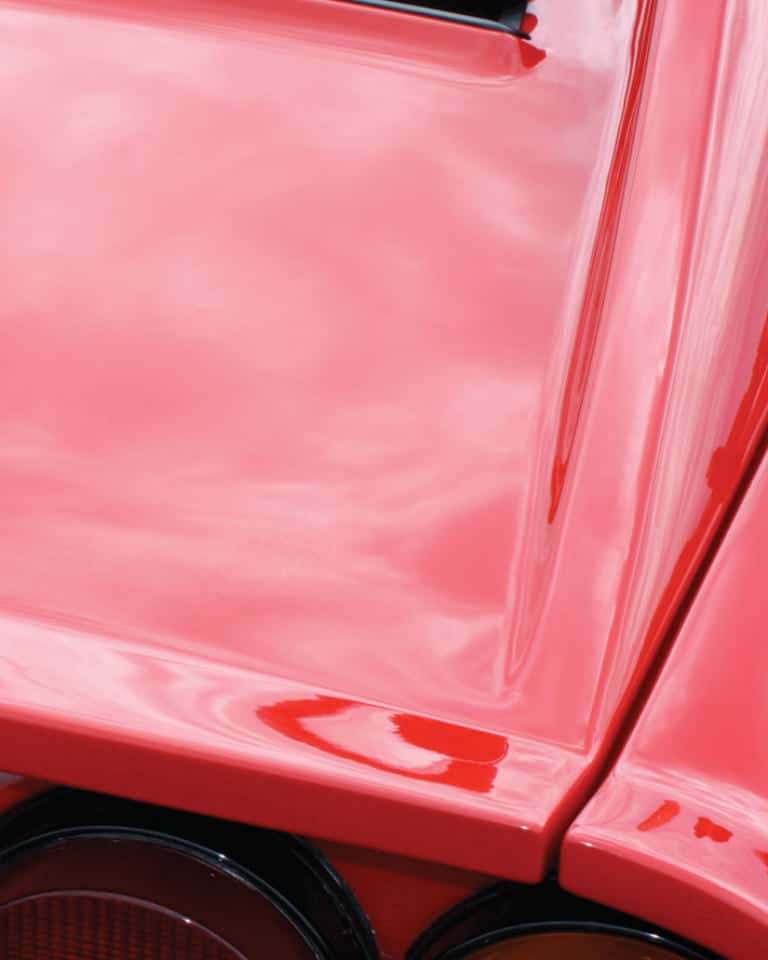
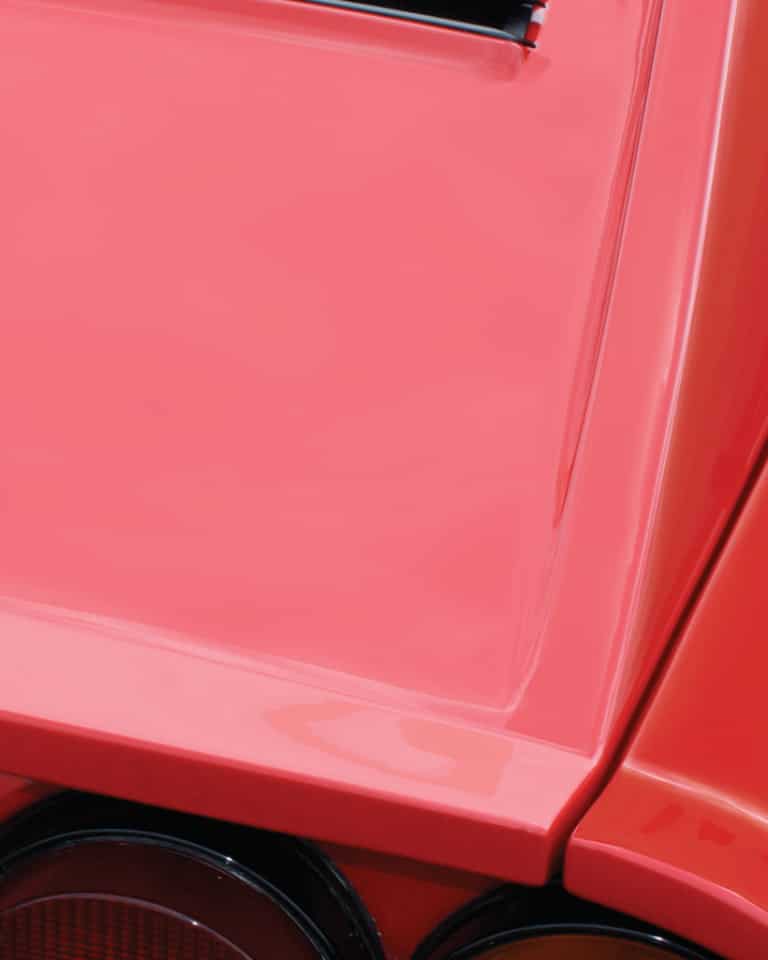
Set around the industry standard of 60 degrees, Aesthetix® gives gloss values complying to international standards with camera images to fully describe surface reflectivity.
60 degree gloss values often conflict with perception. For example, black materials always appear glossier than white materials with the same gloss value. Aesthetix® NEW visual gloss scale (pGU) aligns with real surface perception.

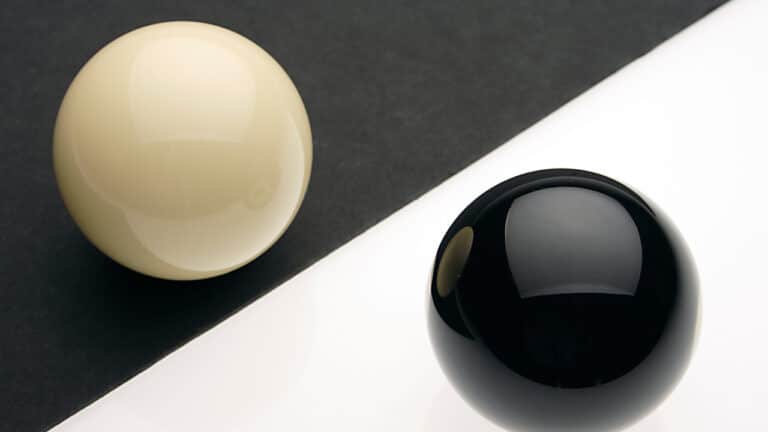
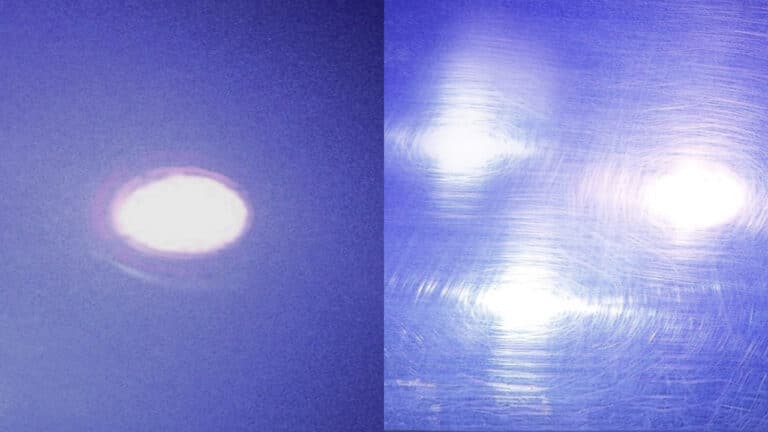
Haze refers to a cloudy or milky appearance on a coated or polished surface. Aesthetix® provides ASTM E430 compatible values and new perception based metrics which predict appearance in different viewing conditions (indoor vs outdoors).
A NEW sharpness parameter (SU) gives improved sensitivity for ultra-fine texture on the highest quality surfaces, whilst DOI units are compatible with Rhopoint IQ ASTM E430 measurements.
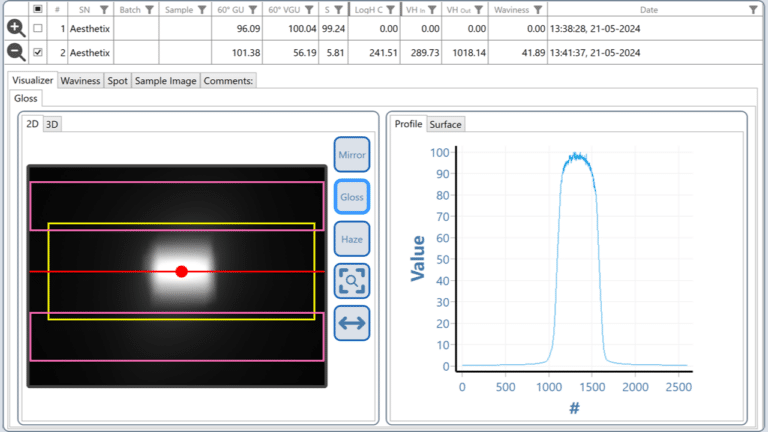

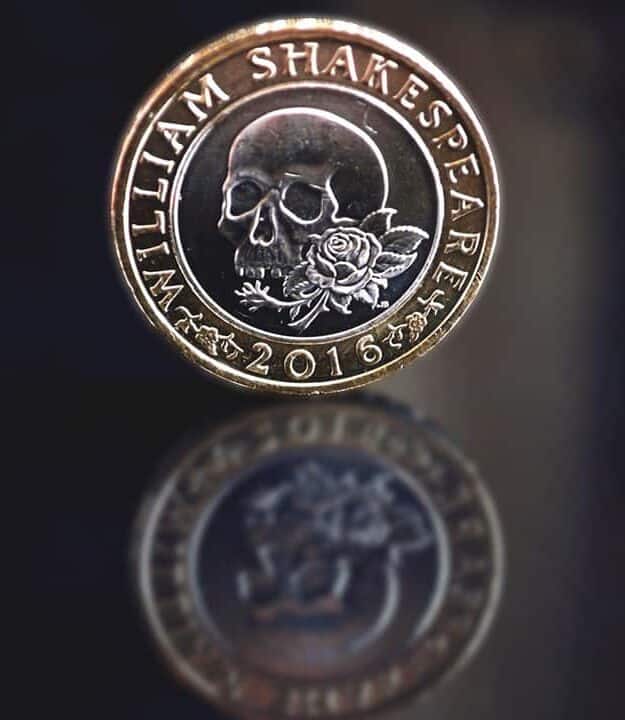
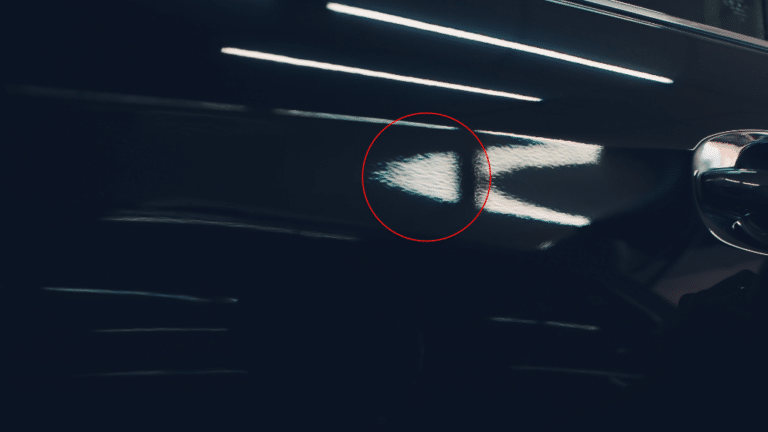
Waviness in surface finishes presents as a wavy texture resembling the peel of an orange.
Aesthetix® offers TAMS Waviness, PCI orange peel scale, and tension values to accurately characterise orange peel for various applications.
Aesthetix® displays surface average Y value from the CIE 1931 XYZ scale. This represents how light or dark the surface appears, independent of its hue or saturation.
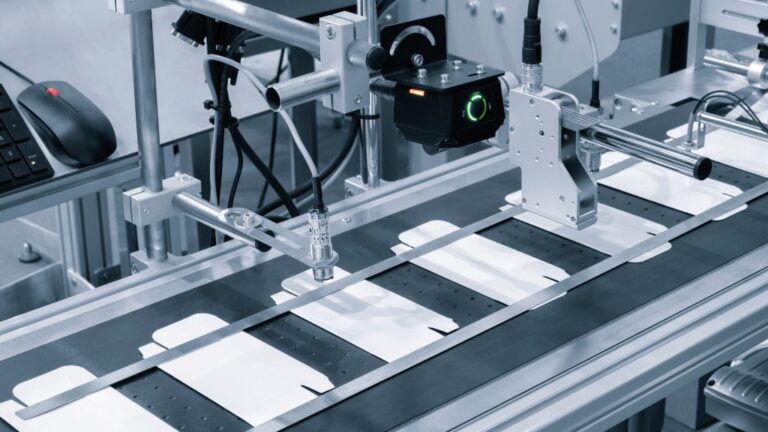

A color-accurate image of the surface is captured and the average RGB values are reported in the Rhopoint Appearance Elements software.
Materials with surface texture such as automotive interior plastics, leather and powder coatings need to have uniformity of appearance and pattern to have maximum visual appeal. The Rhopoint Aesthetix® analyses surface texture to help manufacturers create consistent products with optimum visual appearance and tactile qualities.
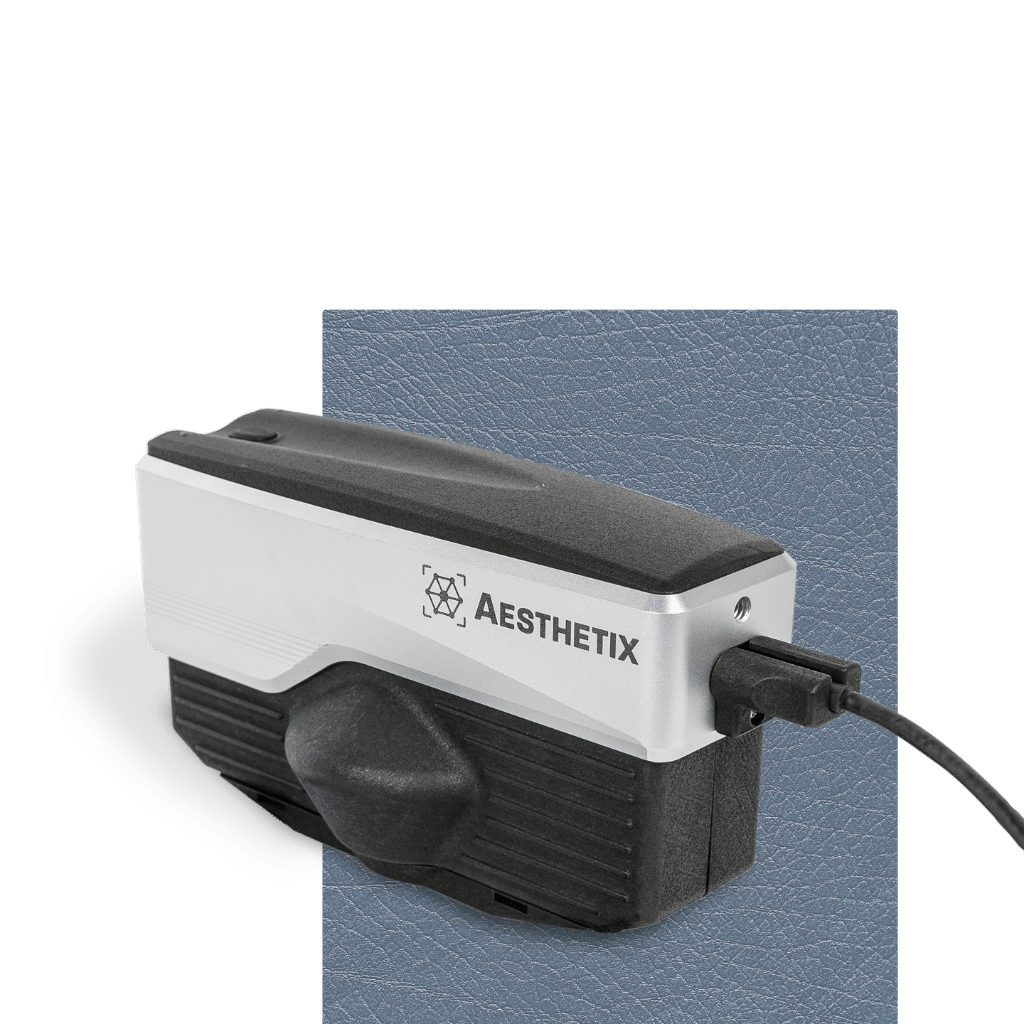
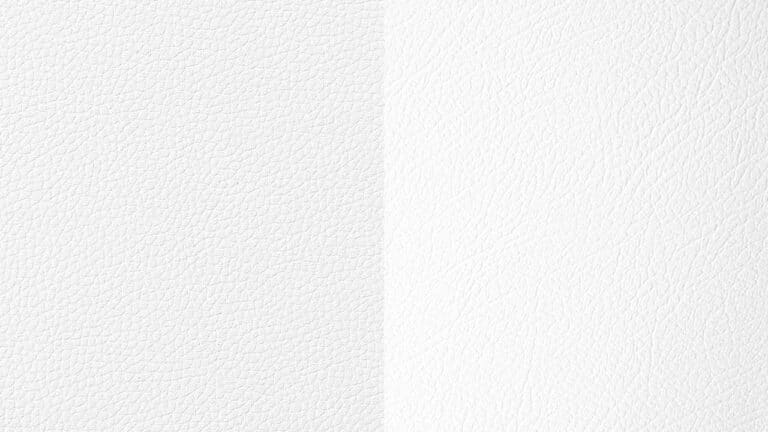
Ca = 90μm
Ca = 40μm
This is the average amplitude of all cells identified within the texture of a material.
This parameter is used to understand the depth of the surface texture which directly influences visual and tactile perception.
Larger cell amplitude often results in a coarser or more textured surface, which can be desirable in certain types of leather goods such as jackets or rustic bags. Conversely, smaller cell amplitude typically leads to a smoother surface, preferred for high-end fashion items like dress shoes or luxury handbags.
The arrangement and density of the cells affect the leather’s mechanical properties such as flexibility and durability. Leather with tightly packed, smaller cells tends to be more durable and resistant to wear and tear, which affects its longevity and visual appearance over time.
The cell structure influences how the leather absorbs and retains dyes. Leathers with a more open cell structure can absorb dyes more readily, leading to rich and deep coloration. This quality makes them appealing for vibrant and colourful leather products.
The cell amplitude can also affect the finish of the leather. A more uniform cell structure can enhance the sheen and create a more elegant finish, while a varied cell structure can give the leather a rugged, matte finish.
Quantifying cell size and distribution helps in evaluating the uniformity, coarseness and overall appearance of the surface, essential for quality control and ensuring consistency in product manufacturing.
Smaller cells create a finer, smoother texture, while larger cells give a coarser appearance, affecting the tactile quality.
Leather with smaller cells is generally softer and more flexible, ideal for luxury items. In contrast, larger cells enhance stiffness, suitable for products needing structural durability.
Smaller cells allow for uniform colour due to consistent dye absorption, whereas larger cells can lead to a mottled effect, which may be desirable depending on the product's intended aesthetic.
Porosity and Breath-ability: Smaller cells result in lower porosity and breathability, affecting comfort in wearables. Larger cells improve breath-ability, enhancing comfort for the user.
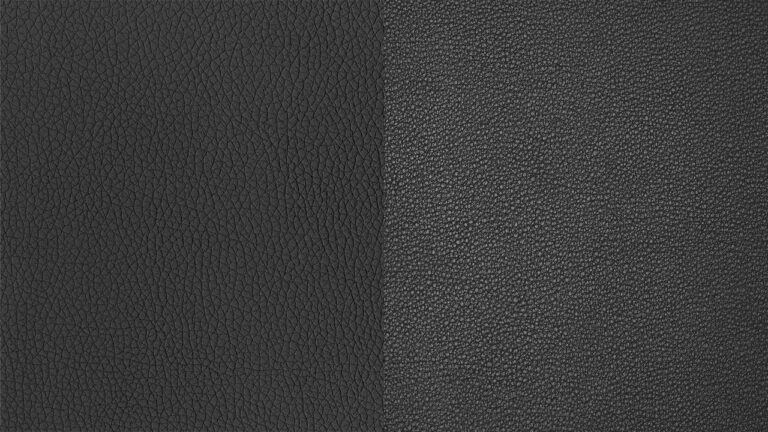
Cs = 3.4mm2
Cells have a larger surface area and the material appears smoother
Cs = 0.7mm2
Cells have a smaller surface area and the material appears more textured and dense
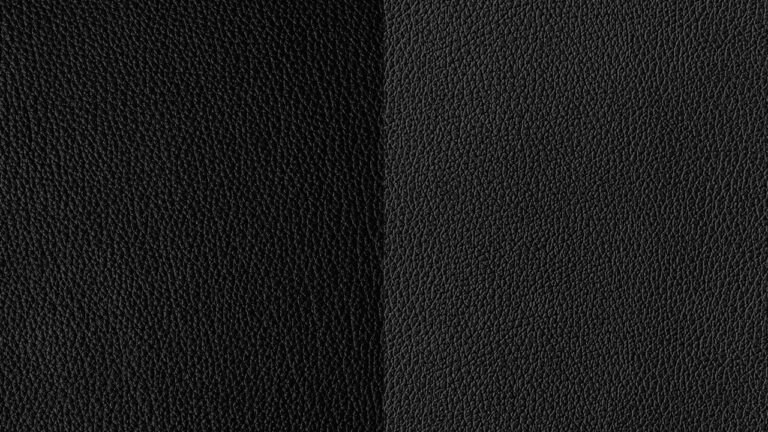
The surface reflectivity is low, meaning that the valleys appear shallow
The surface reflectivity is high, meaning that the valleys appear deeper
Rhopoint Aesthetix® measures overall surface reflectivity and the contrast between the hills and valleys of the pattern. The degree of reflectivity in leather can affect how it looks under different lighting conditions.
The texture of leather is largely defined by the natural grain pattern, which includes variations in the cell hills and valleys. High contrast between these areas can create a more pronounced texture, making the leather appear more rugged or luxurious, depending on the context and treatment of the leather. This contrast is particularly noticeable in leathers where the grain has been preserved during the tanning and finishing processes.
The standard deviation of amplitude for all measured pixels in the 15x15mm field of measurement.
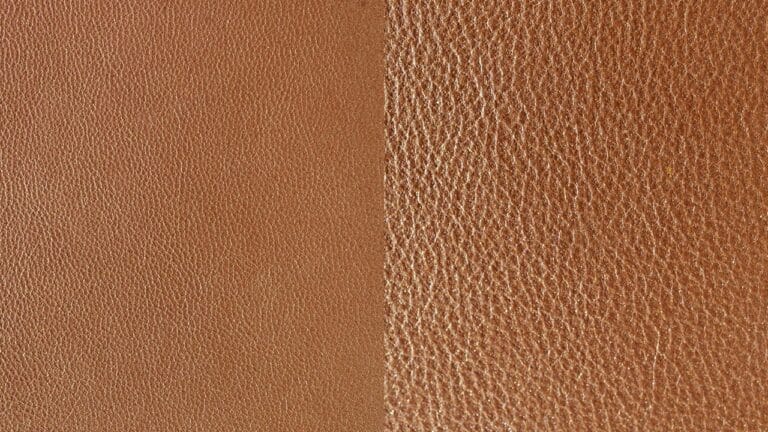
Smoother leathers surfaces may show scratches more prominently and require more careful maintenance to retain their elegant look.
Rougher surfaces often mask minor damage and require less meticulous care.
Aesthetix® displays surface average Y value from the CIE 1931 XYZ scale. This represents how light or dark the surface appears, independent of its hue or saturation.



Set around the industry standard of 60 degrees, Aesthetix® gives gloss values complying to international standards with camera images to fully describe surface reflectivity.
Coatings with effect pigments exhibit sparkle and coarseness. Sparkle refers to a visual texture observed when mirror-like elements within a surface reflects light.
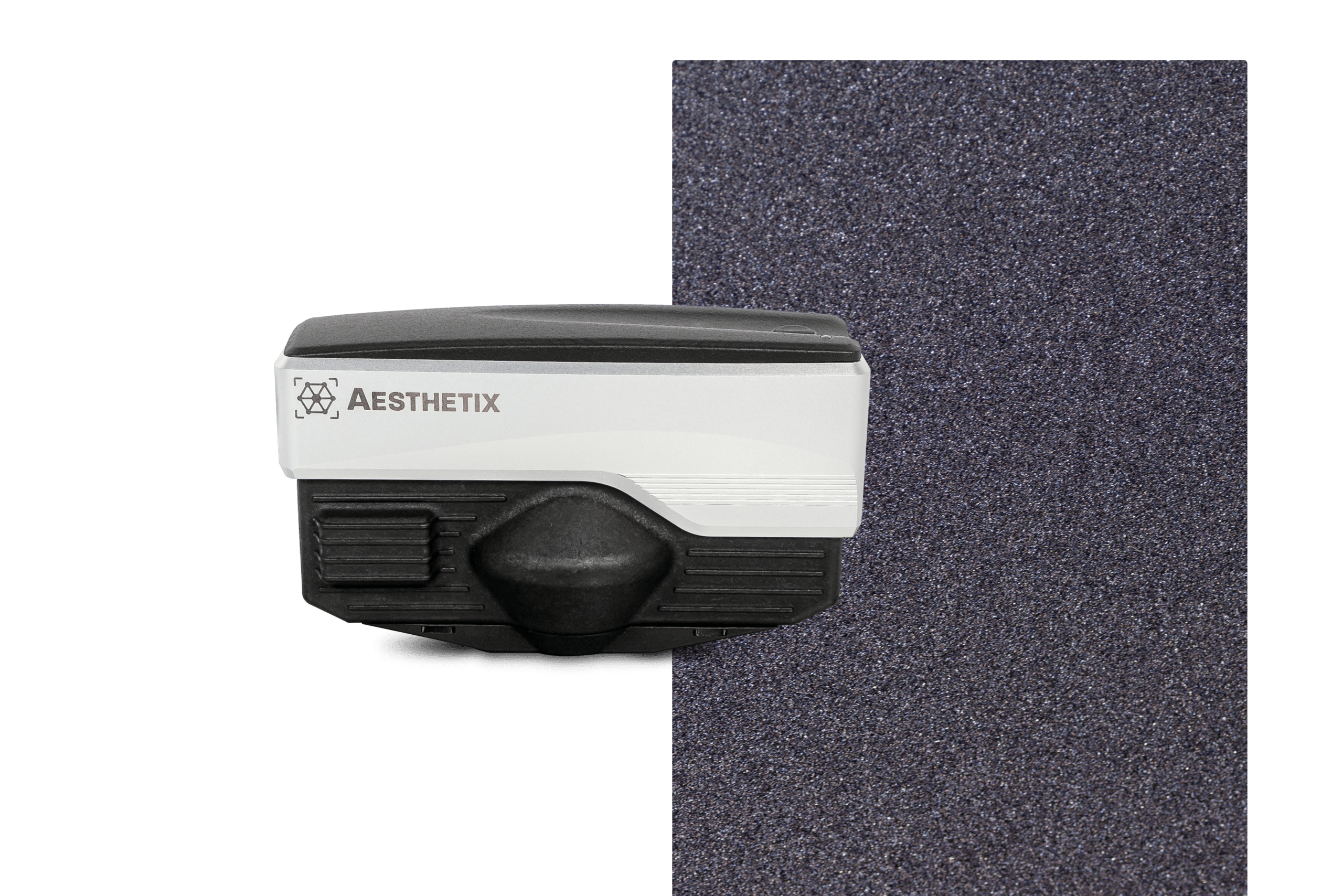
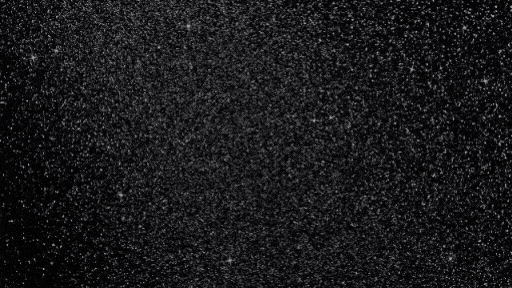
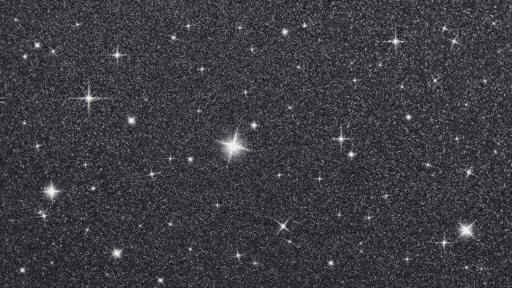
Coarseness describes the nonuniform grainy appearance of a surface when viewed in diffuse lighting conditions. Coarseness tends to increase with pigment loading.
These values show the average RGB color of the visible sparkles in the field of measurement.
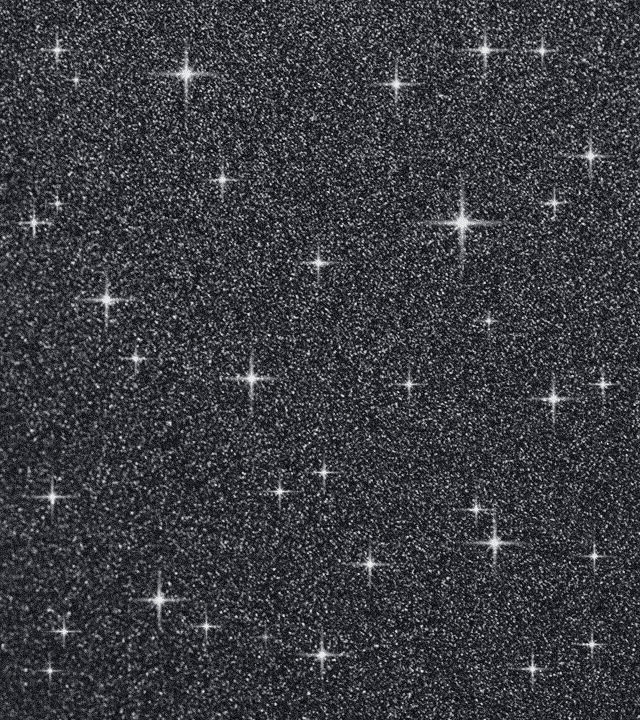
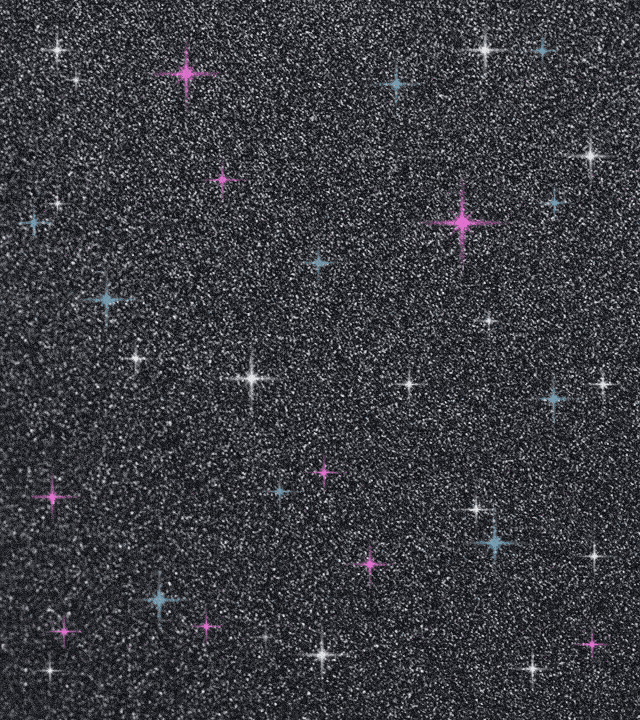
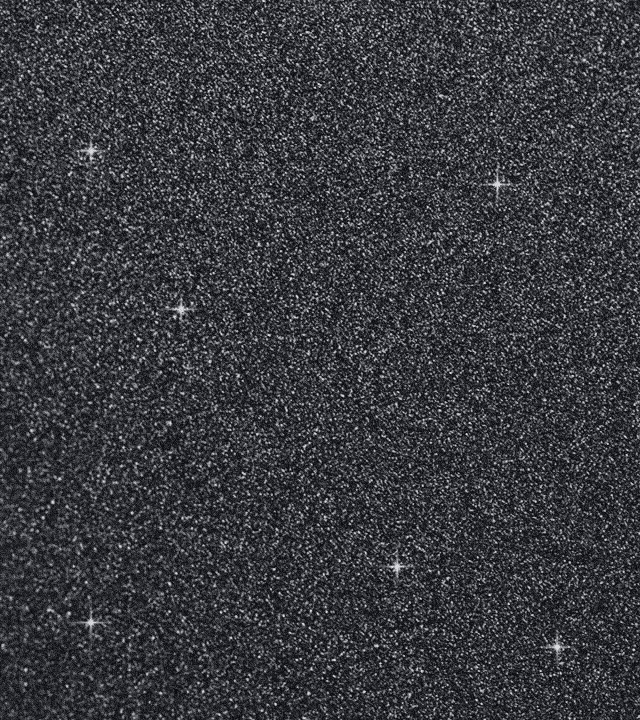
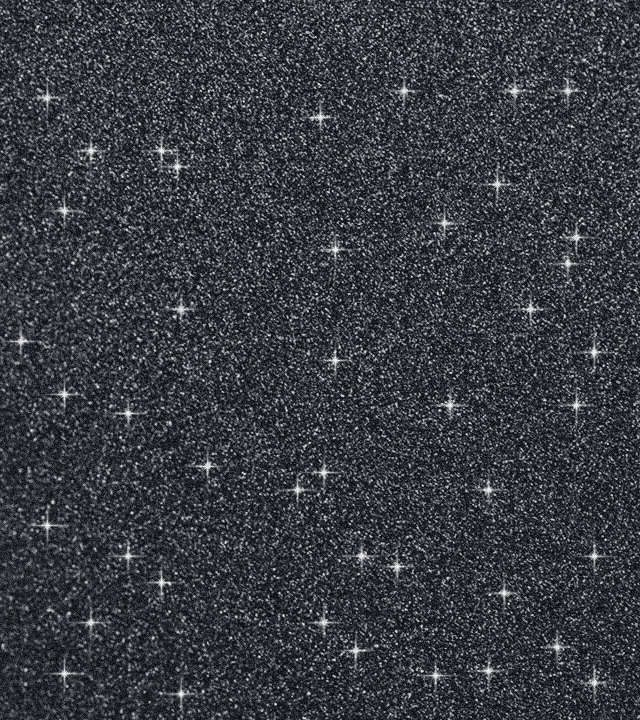
Sparkle density is a measure of the concentration of visible sparkle points on a surface when viewed under directional lighting conditions.
The Aesthetix® reports sparkle visibility; an average intensity value for any sparkling elements which have been identified as visible in the material.
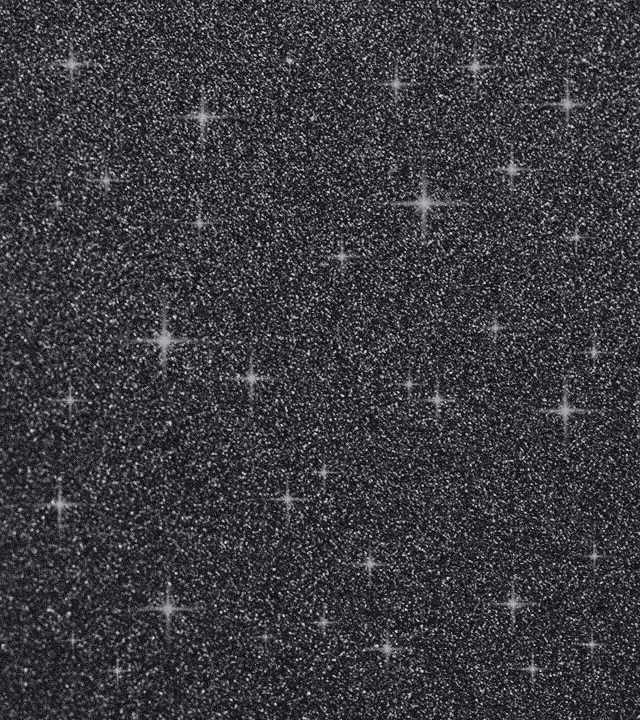
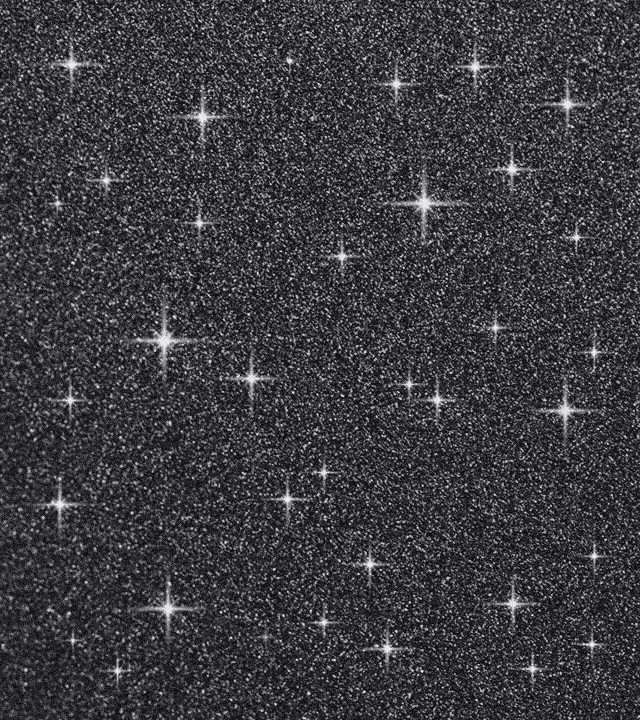
Aesthetix® displays surface average Y value from the CIE 1931 XYZ scale. This represents how light or dark the surface appears, independent of its hue or saturation.


Waviness in surface finishes presents as a wavy texture resembling the peel of an orange.
Aesthetix® offers TAMS Waviness, PCI orange peel scale, and tension values to accurately characterise orange peel for various applications.

Haze refers to a cloudy or milky appearance on a coated or polished surface. Aesthetix® provides ASTM E430 compatible values and new perception based metrics which predict appearance in different viewing conditions (indoor vs outdoors).


Set around the industry standard of 60 degrees, Aesthetix® gives gloss values complying to international standards with camera images to fully describe surface reflectivity.
The Rhopoint Polishing Quality Module is designed to objectively quantify scratches, holograms, and swirls on high-gloss automotive surfaces.
Additionally quantifying gloss, haze, sharpness / DOI for a complete surface characterisation. Ideally suited for manufacturers optimising polishing processes and evaluating spot repairs.
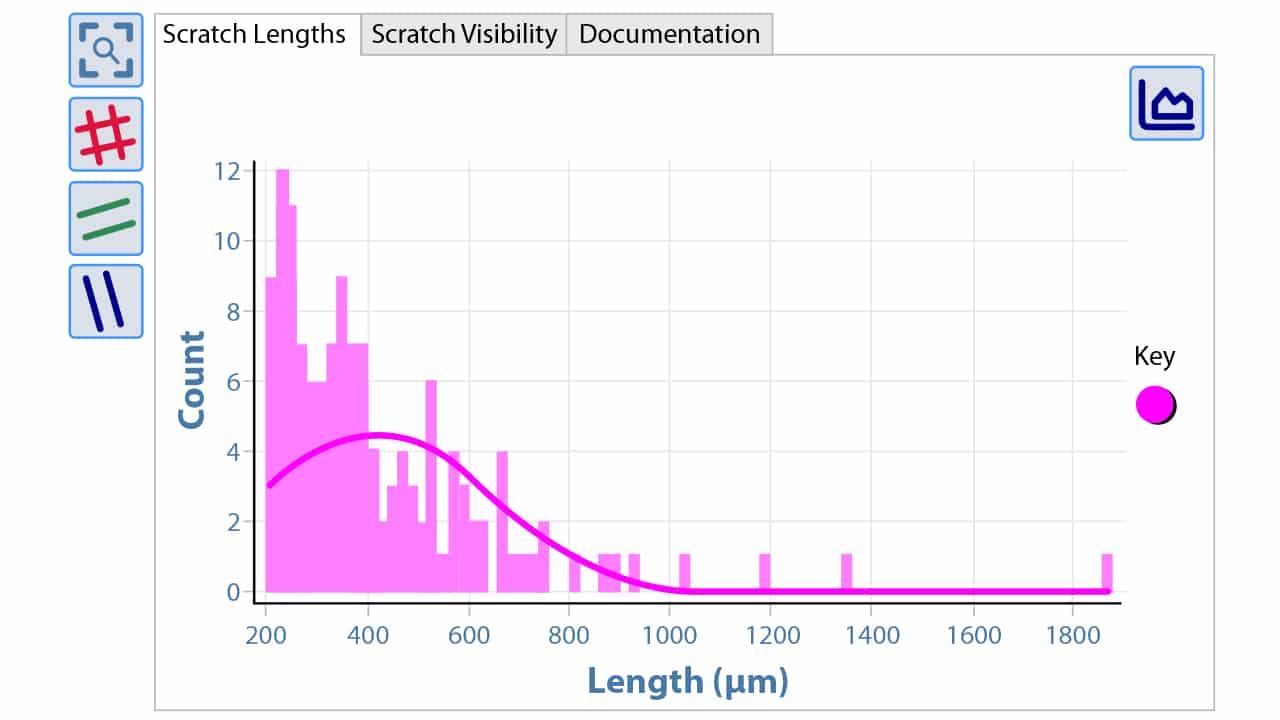
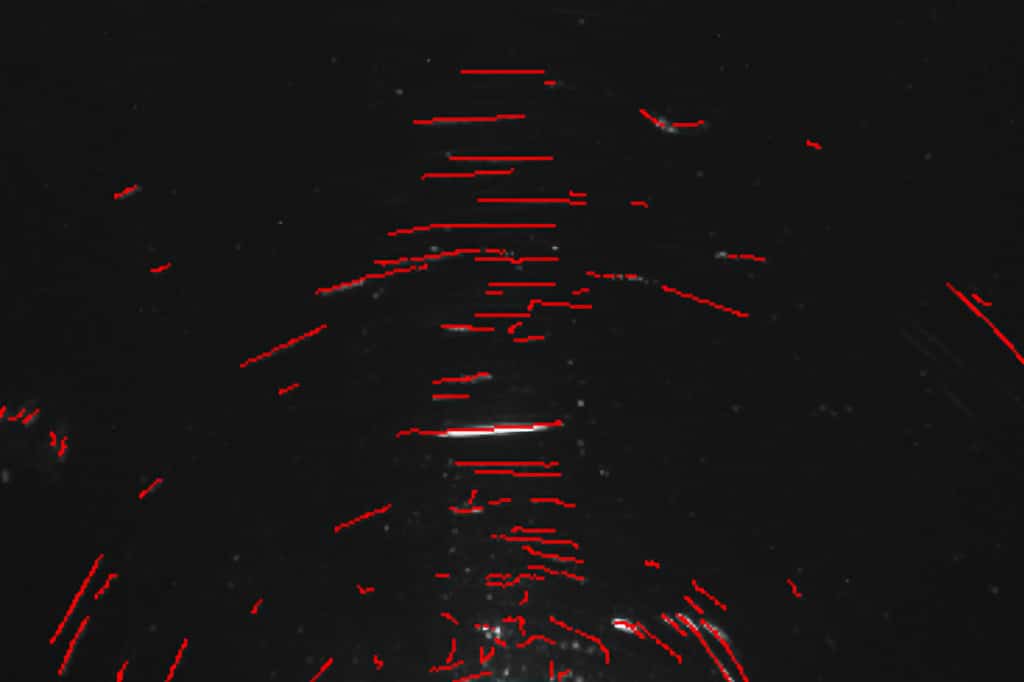
Swirls, holograms and scratches on a surface are identified, toleranced by length and quantified.


Set around the industry standard of 60 degrees, Aesthetix® gives gloss values complying to international standards with camera images to fully describe surface reflectivity.

Haze refers to a cloudy or milky appearance on a coated or polished surface. Aesthetix® provides ASTM E430 compatible values and new perception based metrics which predict appearance in different viewing conditions (indoor vs outdoors).
A NEW sharpness parameter (SU) gives improved sensitivity for ultra-fine texture on the highest quality surfaces, whilst DOI units are compatible with Rhopoint IQ ASTM E430 measurements.



Aesthetix Cross-cut Adhesion Module replaces the subjective analysis of reproducible imaging measurement, increasing the speed and accuracy of a critical test which quantities durability and performance of a coating under various conditions.
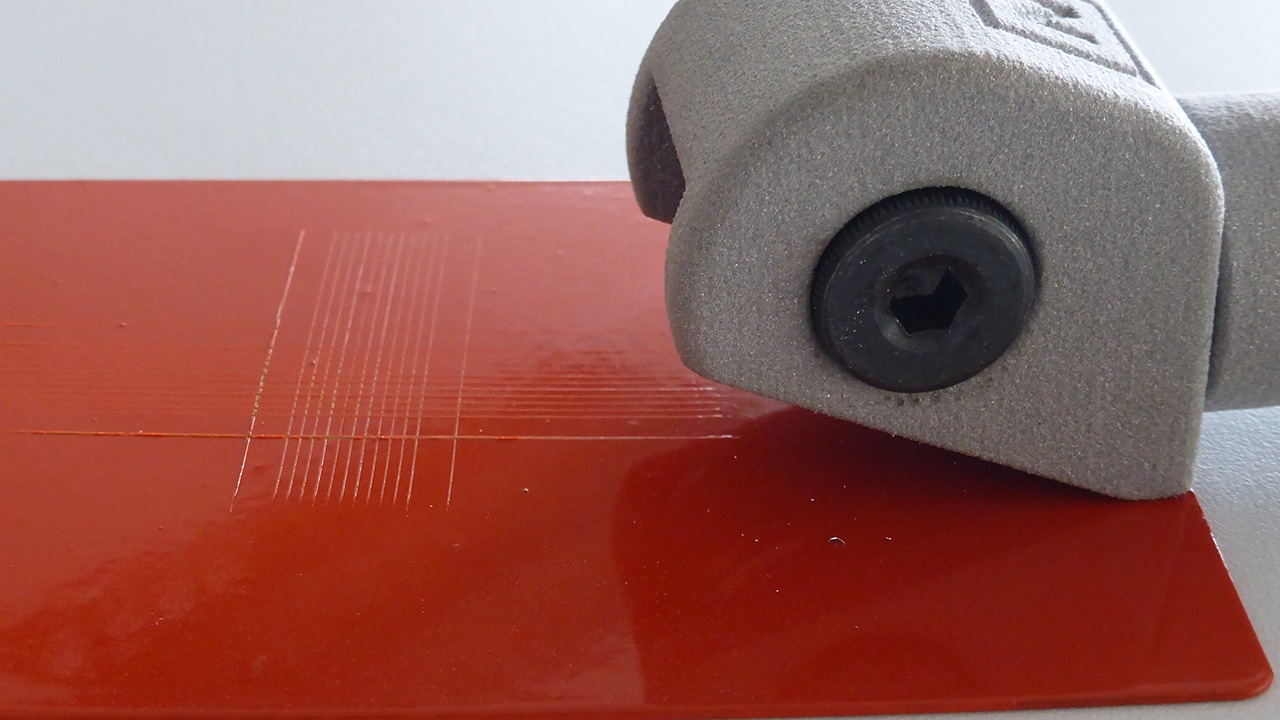
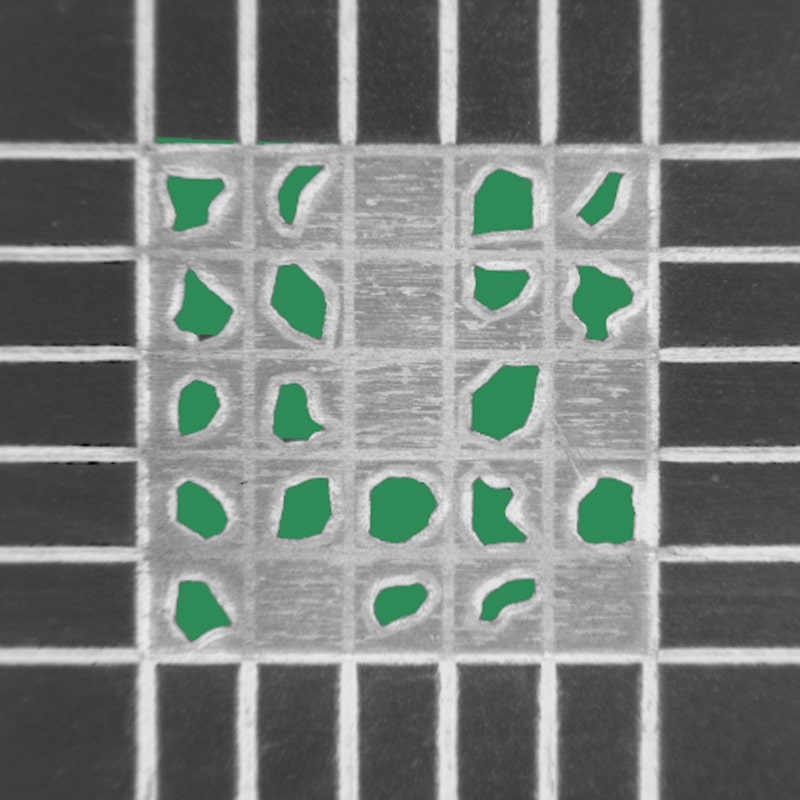
Cross-cut AE software identifies the amount of coating remaining after testing and classifies according to ASTM D3359 and ISO 2409.
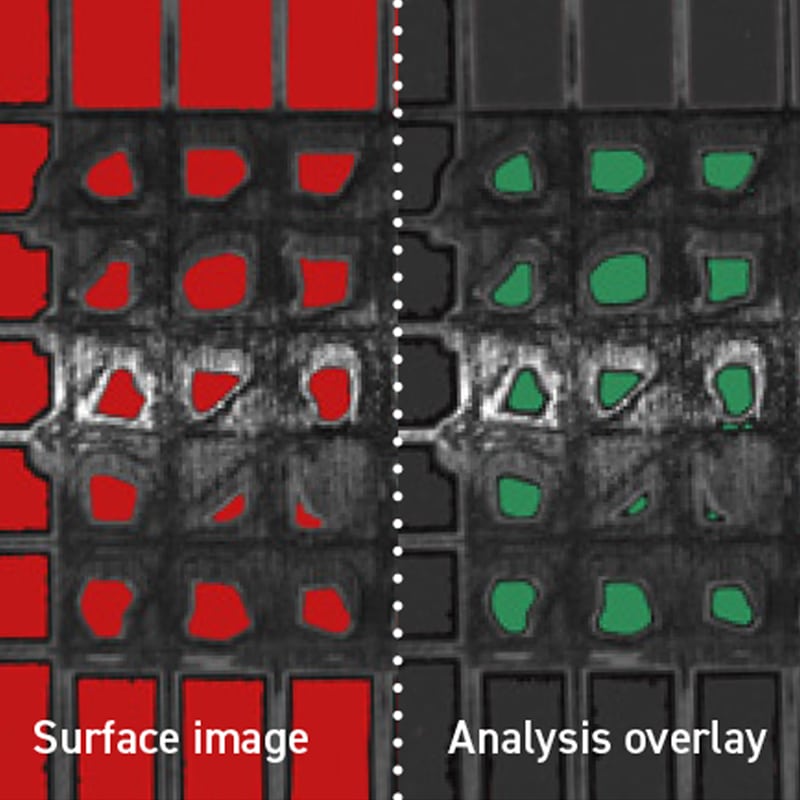
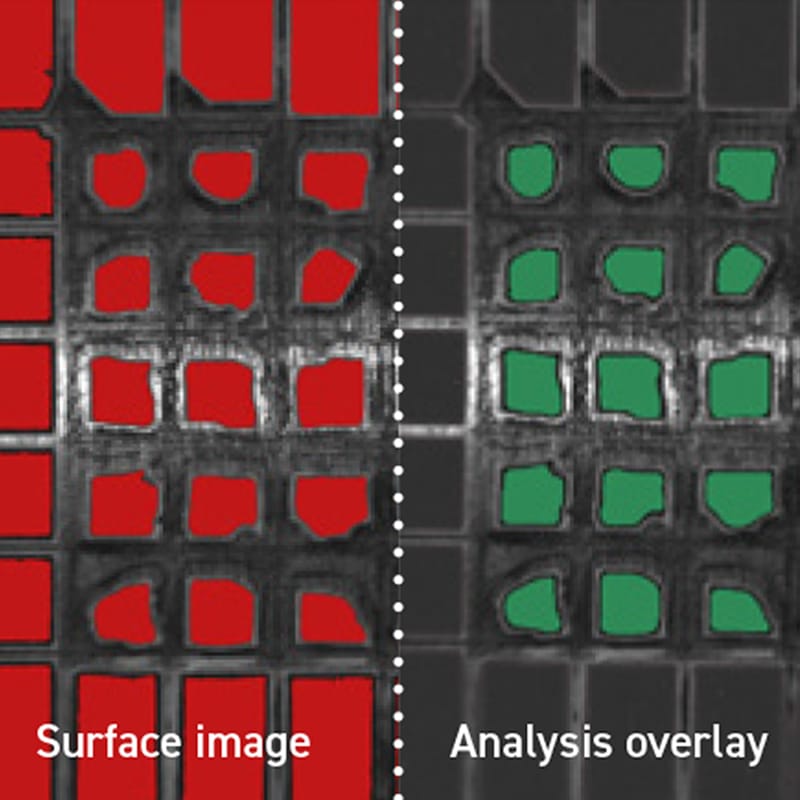
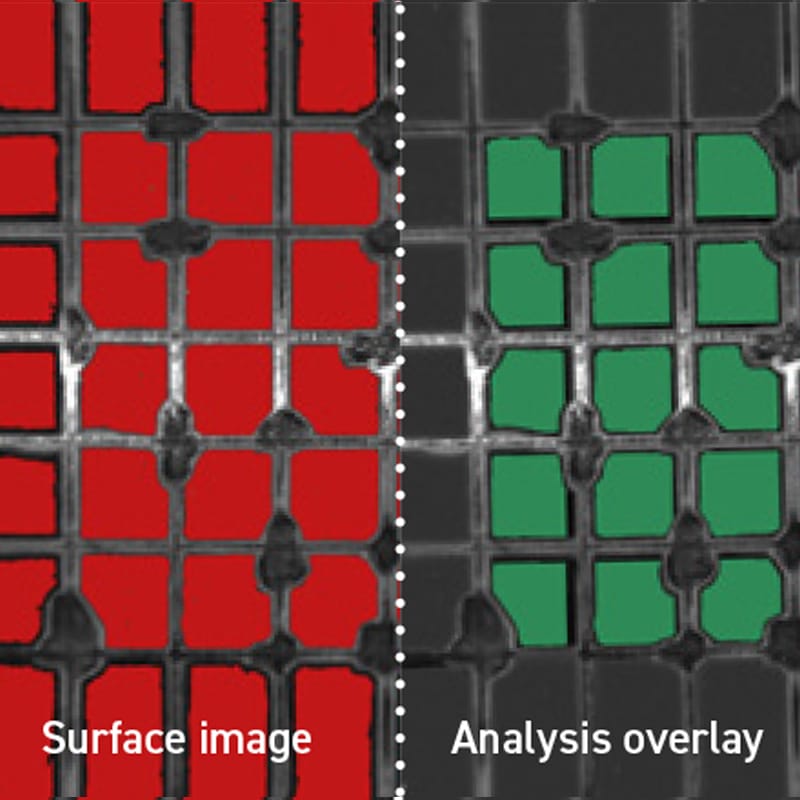
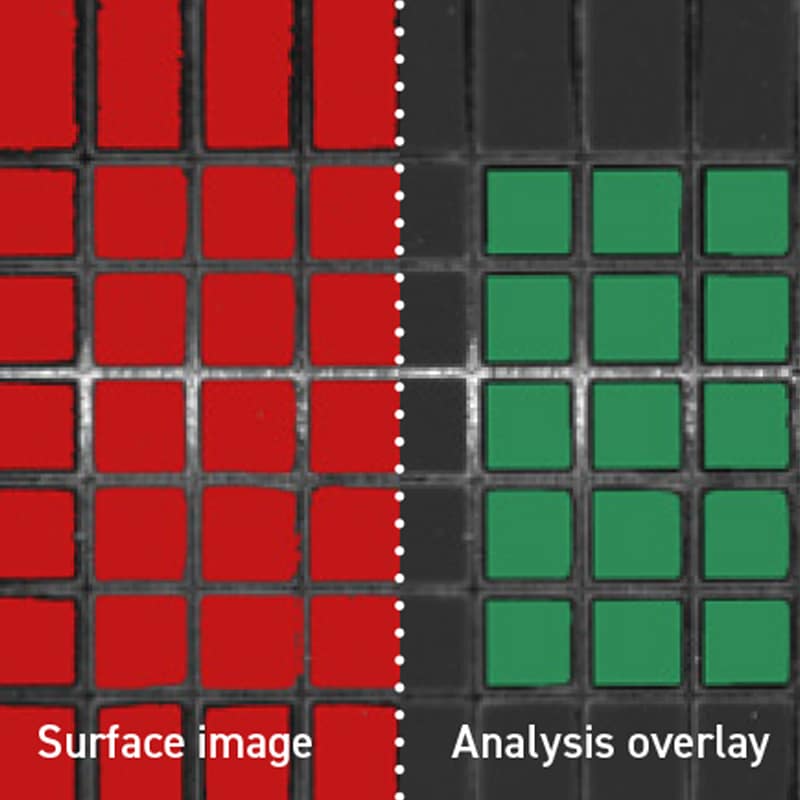
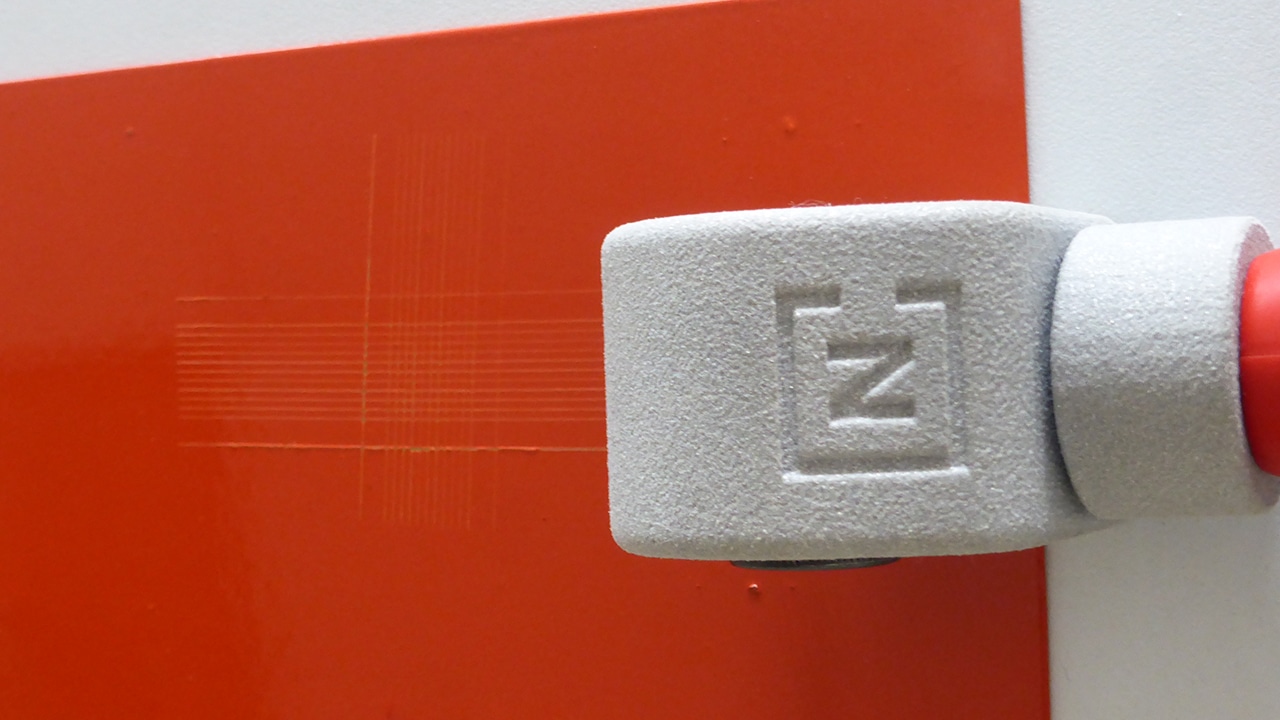
Advantages over visual assessment
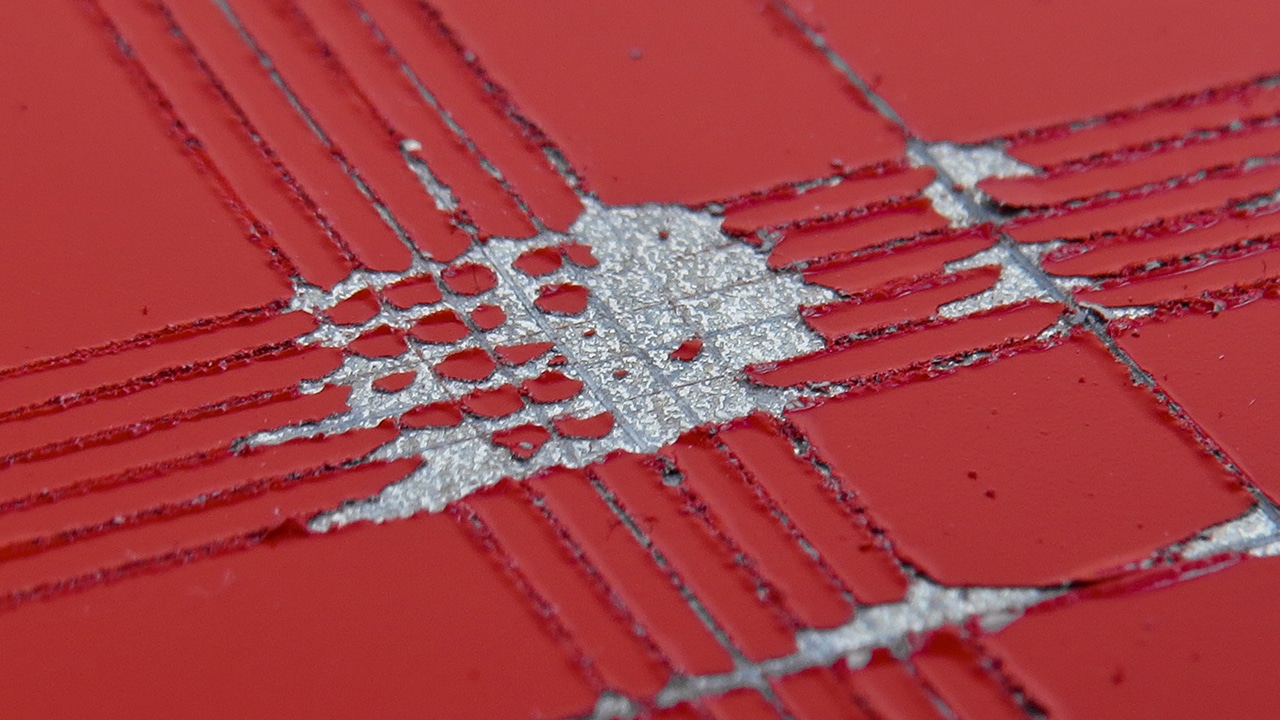
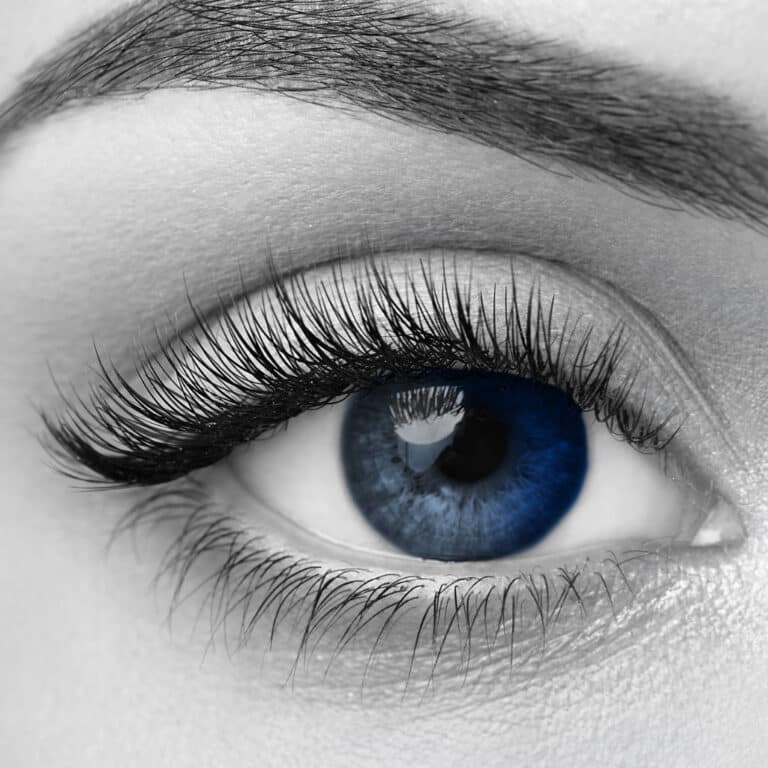
Create the perfect surface finish by measuring all the parameters that affect visual appearance and match what your eye sees.
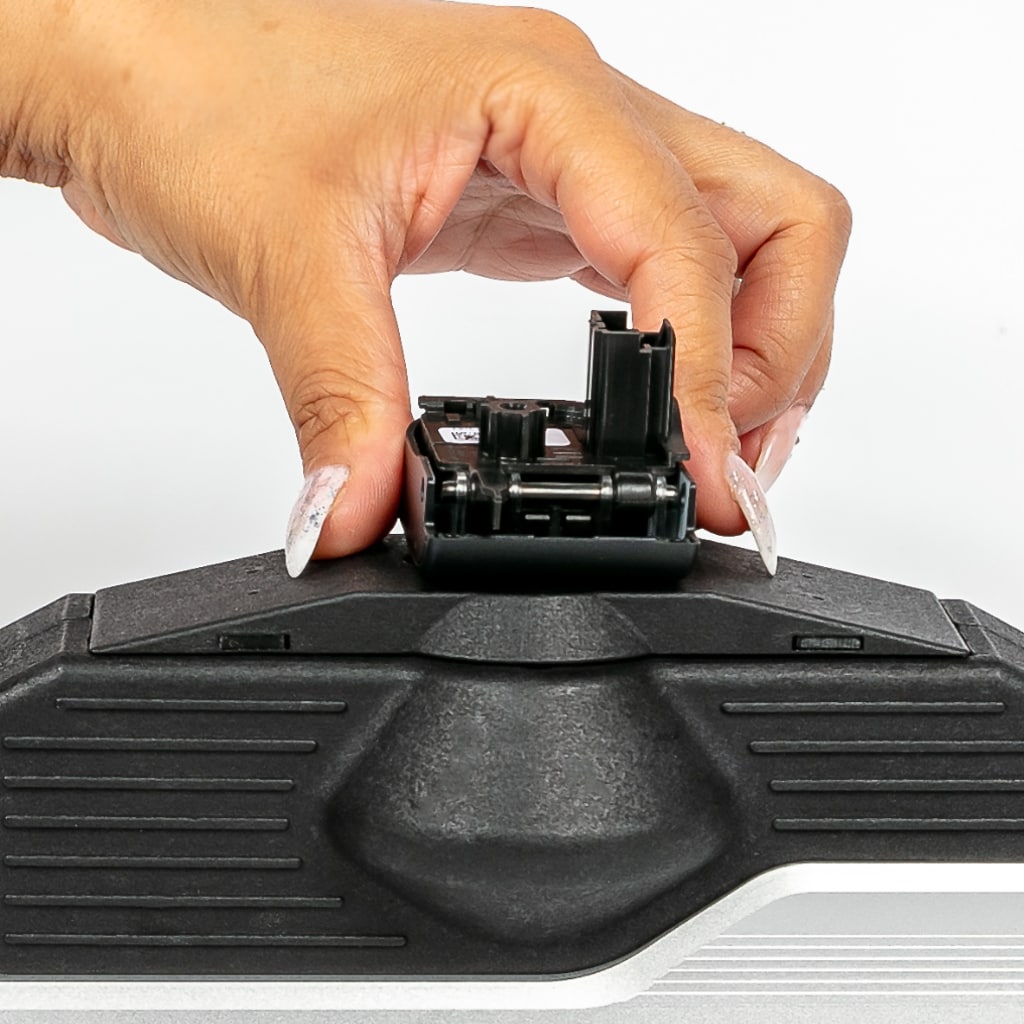
A dual camera sensor with innovative lighting captures HDR surface and gloss images with exceptional resolution lower than the human eye.
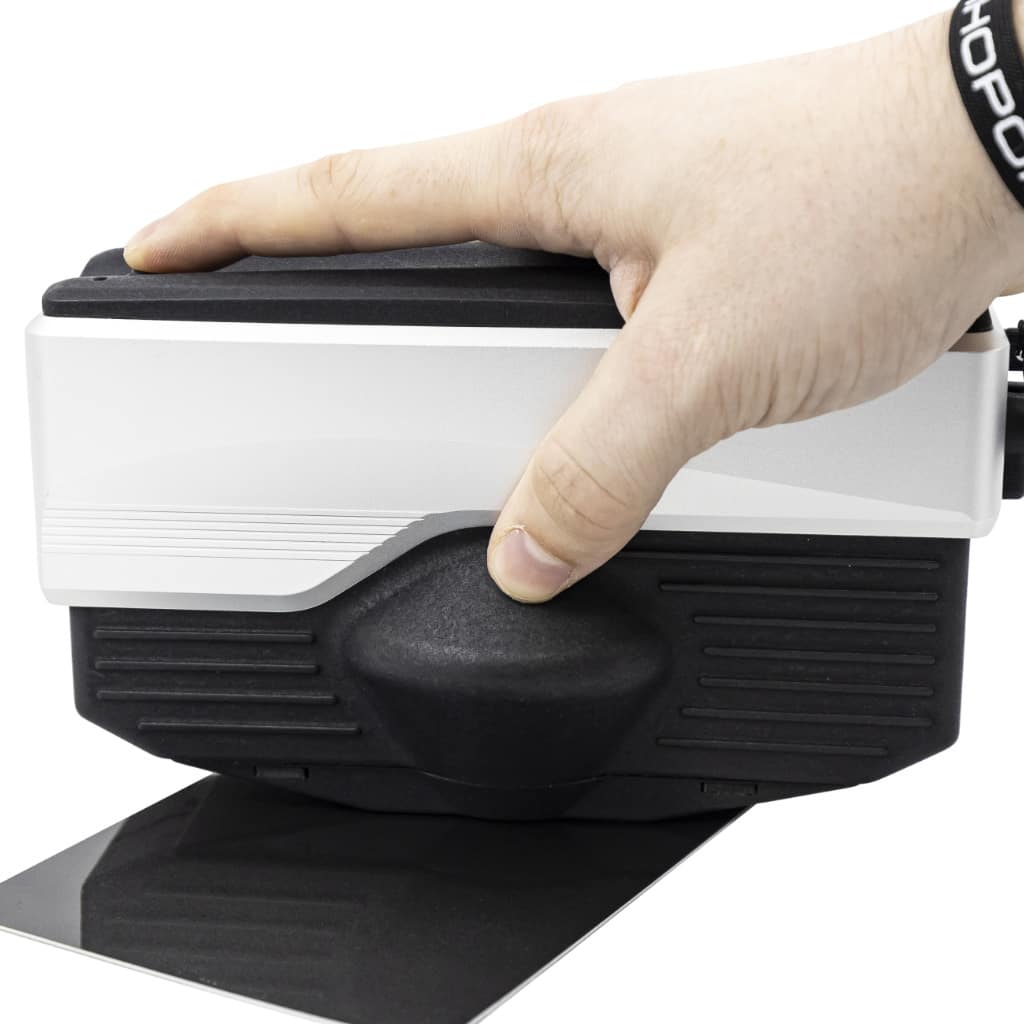
The Rhopoint Appearance Element software uses perception algorithms to calculate parameters that predict the human visual response to important surface characteristics.
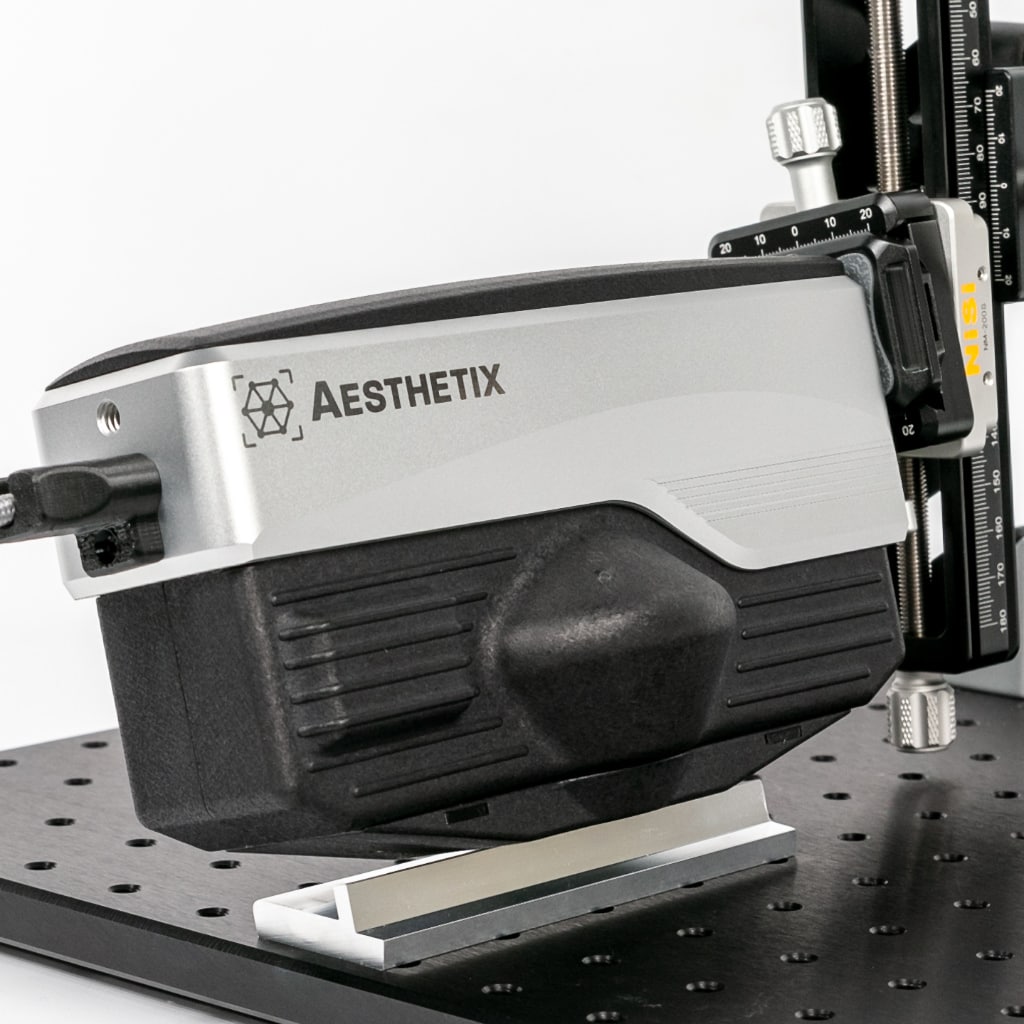
Uniquely, the Rhopoint Appearance Element software allows technical control based on ISO or ASTM standard procedures and at the same time, checks for visual judgment.
Gloss is an aspect of the visual perception of objects that is as important as colour when considering the psychological impact of products on a
Identify the surface that you wish to measure. Is it a flat surface? If so, it can be measured with a traditonal glossmeter. Curved surfaces
RSpec is the peak reflectance measured over a very narrow angular band in the specular direction (+/-) 0.0991º. RSpec is very sensitive to any texture
Please note, this is NOT a quotation, just a confirmation of the price when purchased in the UK exclusive of VAT/duties